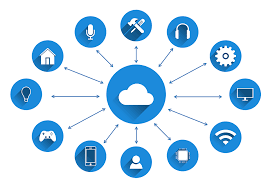 The Computing Community Consortium (CCC) Industry Collaboration working group recently released the Evolving Academia/Industry Relations in Computing Research: Interim Report. This report outlines a number of emerging trends within computing research, most importantly the rising level of interaction between professors and industry. These trends have been shaped by access to industry resources such as cloud computing, AI, and big data. As those resources become more valuable, computing researchers in academia are leaving for or entering into joint appointments with industry in order to gain access to those key assets.
The Computing Community Consortium (CCC) Industry Collaboration working group recently released the Evolving Academia/Industry Relations in Computing Research: Interim Report. This report outlines a number of emerging trends within computing research, most importantly the rising level of interaction between professors and industry. These trends have been shaped by access to industry resources such as cloud computing, AI, and big data. As those resources become more valuable, computing researchers in academia are leaving for or entering into joint appointments with industry in order to gain access to those key assets.
From the Interim report:
Modern industrial deep learning models, like the BERT language model recently published by Google[1], have hundreds of millions of parameters and require hundreds of days to train on the most powerful GPUs available.[2] Renting GPUs to compute such models using the AWS cloud costs literally tens of thousands of dollars for a single model training. Few, if any, faculty have access to computing at this scale without aligning with a company. With AI deep learning research being both data and compute hungry, it becomes increasingly challenging for CS faculty to do cutting-edge research without partnering with companies.
Related to this developing trend, the National Science Foundation (NSF) Computer and Information Science and Engineering Directorate (CISE) held a workshop on enabling research and education in cloud computing in January 8-9, 2018. Organized by Jen Rexford (Princeton and a member of the CCC’s Industry Collaboration working groups), Magdalena Balazinska (University of Washington), David Culler (UC Berkeley, and Jeannette Wing (Columbia), the workshop produced the Enabling Computer and Information Science and Engineering Research and Education in the Cloud report.
The report made the following recommendation:
Form a central entity to serve as a nexus between multiple cloud providers on one side and multiple academic institutions on the other: A central entity can serve as a single point of contact for the cloud providers and a unified voice for CISE researchers and educators, to further lower the barriers to academic use of the cloud. This entity can dig deeper into the topics outlined in the report, and serve as a convener and trusted third party in further efforts to bring the key stakeholders together. This central entity can help identify base requirements for academic cloud use, arrange for bulk purchases of cloud credits, draft templates for agreements between cloud providers and academic institutions, support creation of a cadre of professional staff to support academic cloud usage, identify and support software tools and data sets unique to academic users, and ensure that the large and diverse set of academic institutions are supported.
The CISE workshop led to a program solicitation on Enabling Access to Cloud Computing Resources for CISE Research and Education. The synopsis states that CISE “seeks to fund an entity that can serve as a principal interface between the CISE research and education community and public cloud computing providers. Through this solicitation, NSF will support an entity that will have multiple responsibilities, including: 1) establishing partnerships with the various public cloud computing providers; 2) assisting NSF in allocating cloud computing resources to qualifying CISE-funded projects; 3) managing cloud computing accounts and resources allocated to individual CISE projects; 4) providing user training and other support to CISE researchers and educators using cloud computing in their work; and 5) providing strategic technical guidance for CISE researchers and educators interested in using public cloud computing platforms.”
Learn more about the Cloud Computing Resources solicitation, including which awards have been funded, on the program solicitation webpage. Read the CCC’s Evolving Academia/Industry Relations in Computing Research: Interim Report and provide feedback with your thoughts through the CCC blog.
[1] https://arxiv.org/abs/1810.04805
[2] http://timdettmers.com/2018/10/17/tpus-vs-gpus-for-transformers-bert/









